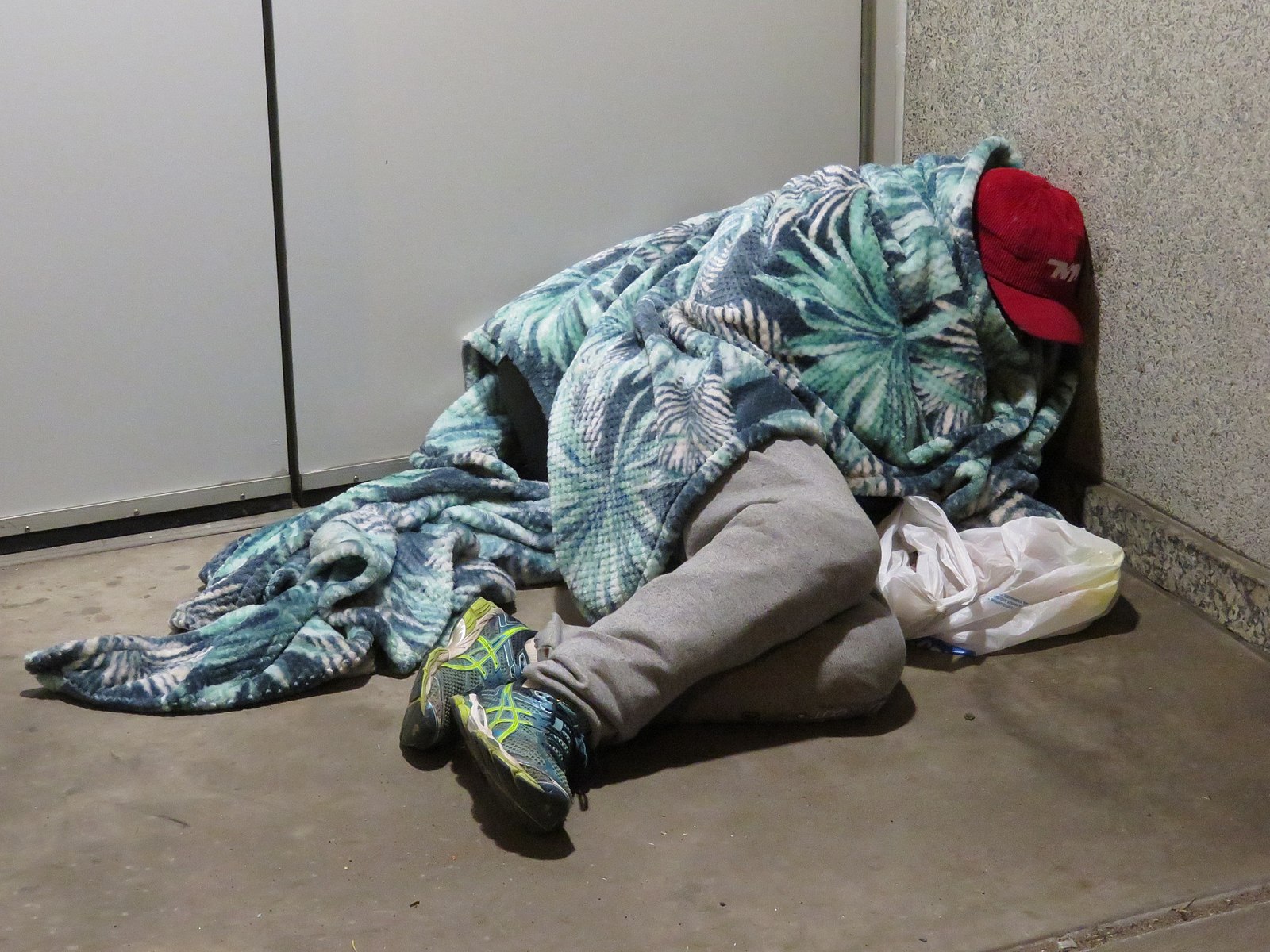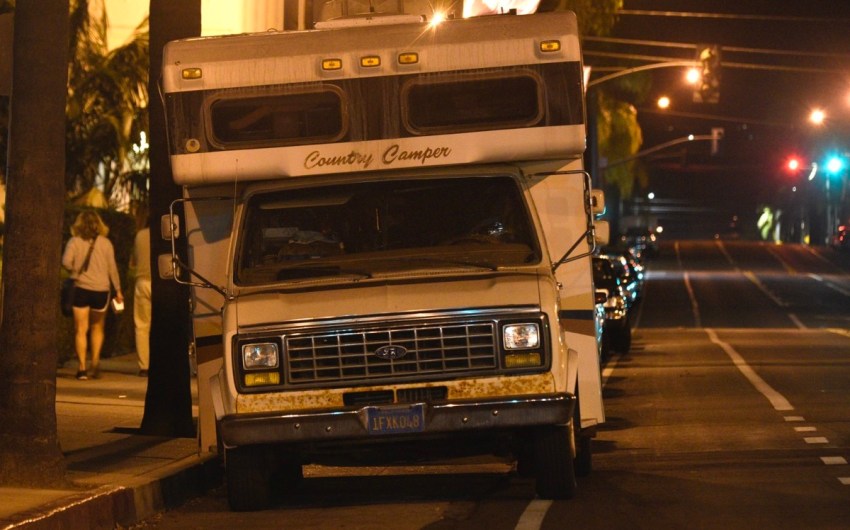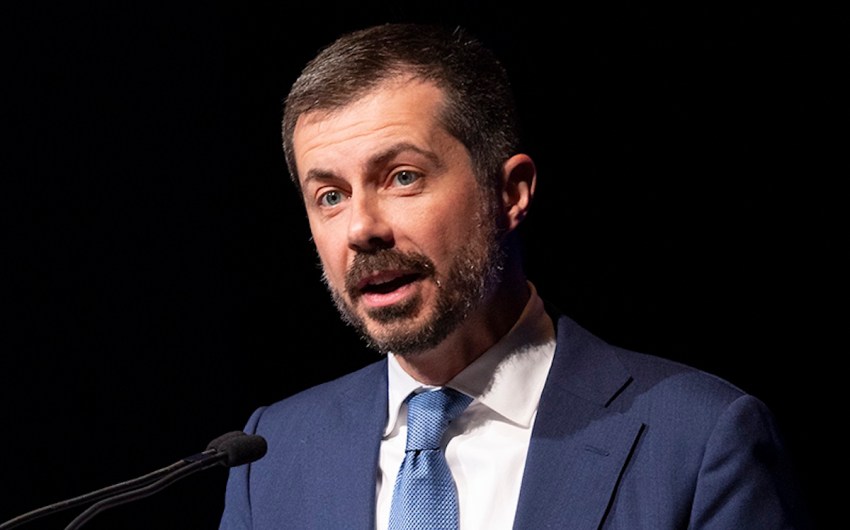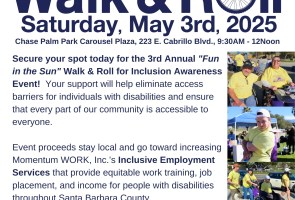This article was underwritten in part by the Mickey Flacks Journalism Fund for Social Justice, a proud, innovative supporter of local news. To make a contribution go to sbcan.org/journalism_fund.
Santa Barbara County staff and nonprofit partners homed in on the link between housing insecurity and homelessness at Solvang’s community event on Wednesday. The event came as part of a partnership between Supervisor Joan Hartmann’s office, Santa Barbara County, the City of Solvang, and the Santa Barbara Alliance for Community Transformation, an organization that works to abolish homelessness.
Randy Murphy, Solvang’s city manager, opened the discussion by telling his own story — how about a decade ago, he experienced housing insecurity.
“If it can happen to me, then it can happen to anyone,” he said. “I had a good-paying job, and then I didn’t. I had a family, and then I didn’t. I had no income, and if it weren’t for the largess of some friends and some other family, I very easily could have been on the street.”
Housing Insecurity and Homelessness
Both homelessness and housing insecurity have grown in Santa Barbara County in the last decade. Homelessness in Santa Barbara County went up by about 12 percent since 2023, according to data from the State of California. The 2024 Point in Time survey in the county documented 2,119 people experiencing homelessness in the county. The survey reported that 72 percent of unhoused people reported having lived in Santa Barbara County before becoming homeless.
At the event, Joe Dzvonik, the deputy director of housing and community development for the county, said that while the Santa Ynez Valley has fewer homeless people overall, the number of homeless people in the region is roughly proportional to the population, according to the Point in Time Survey.
“We don’t want anybody, or any community, to experience [homelessness and housing insecurity], whether there’s one or five or ten people, and not understand there are ways to address that homeless situation,” he said.
The county has made progress in sheltering homeless people. Along with the number of homeless people increasing, so, too, has the number of year-round beds — by 11.4 percent. There were more than 3,000 year-round beds in 2024, according to state numbers.
The county is experiencing a push to build more housing as well, with several developments with some affordable units planned and under construction across the county. Many of these projects take advantage of “density bonuses” prescribed by the state.
But housing insecurity remains. Across the county, many people are extremely rent burdened, meaning they spend more than 50 percent of their monthly income on rent. The California Housing Partnership, a private nonprofit created by the state legislature in 1988, estimates that about 17,000 low-income households in Santa Barbara County do not have access to affordable housing. The partnership estimates that a person would need to make $49.11 an hour to afford the average asking rent of the entire county — $2,554.
‘Where Diversion Kicks In’
“[The] bottom line [is] in the economy we’re in, you could be working full-time making minimum wage and probably not be able to afford a place to live, unfortunately,” said Kirsten Cahoon, the director of shelter operations for Good Samaritan Shelter, a nonprofit organization that manages shelters, counseling, and support services across Santa Barbara and San Luis Obispo counties.
Cahoon spoke about how Good Samaritan provides diversion services, which helped prevent individuals from experiencing homelessness in the first place.
“When they call the shelter and say, ‘Do you have a bed? I’m about to become homeless,’ that’s really where diversion kicks in. What can we do at that moment to prevent them from having to come and take a bed in one of our shelters?” she said.
Cahoon said diversion from homelessness could include helping someone pay their rent or reuniting them with family who can house them. She said diversion services are also, in the long run, more affordable.
“It’s a lot less expensive to pay somebody’s rent for a couple of months when they’re behind than it is for them to come into this homeless services system where, on average, it takes about six months for somebody to go from homelessness to housing,” she said.
Along with diversion services, Cahoon said Good Samaritan offers both congregate (people sharing one space) and non-congregate (individual spaces for individuals) shelters, as well as street outreach teams and other services.
People Helping People in the Valley
Panelists spent some time addressing the Santa Ynez Valley specifically. Erica Flores is the director of development and communications at People Helping People. The nonprofit focuses on providing social services to the Santa Ynez Valley. At the community event, Flores said that People Helping People started as an initiative to address food insecurity. Increasingly, however, the organizations have expanded their services offered. Flores said she noticed this shift around 2021.
“[It] was not too far into 2021 that I had more people coming in [who were] living in their cars, living outside,” she said. “The history of our organization had really been feeding people that had homes and kitchens. And that began to shift, that all of a sudden it was like, ‘Oh, we need can openers.’”
Flores called People Helping People a connection point, helping people accessing services they need.
“The Santa Ynez Valley does not have shelter. It does not have safe parking. It does not have safe sleeping,” Flores said. “We do not have a public transportation system that’s going to get you to many of the county agencies, social services, nonprofits, shelters, or domestic violence solutions.”
People Helping People, Flores said, focuses on prevention — not just preventing homelessness, but also mental-health crises — by partnering with Santa Barbara County Behavioral Wellness. She said the organization does early intervention through school-based counseling and has family resource centers throughout the Santa Ynez Valley.
Next Steps
At the end of the event, panelists address the question, “What can the community do?” Steps included becoming familiar with services available, volunteering, and supporting affordable housing projects.
Katherine Soto-Vasquez, the encampment response manager with the county’s homelessness services program team, closed the event by saying there was a need to bring people back into the community, such that people resistant to services are brought back into the fold, and trust services available.
“Just acknowledging someone when you see them will go a long way,” she said.
If you are homeless or housing insecure, or if you know someone seeking help, you can reach out to the Good Samaritan Shelter Hotline at (805) 519-1302.
Premier Events
Sat, Jul 26 7:30 PM
Santa Barbara
Pink Floyd Laser Spectacular LIVE present SHINE ON
Thu, May 01 6:30 PM
Santa Barbara
May Day Strong: Santa Barbara
Sat, May 03 9:30 AM
Santa Barbara
Fun in the Sun Walk & Roll for Inclusion
Sun, May 04 11:00 AM
Santa Barbara, CA 93105
Santa Barbara Fair & Expo
Wed, May 07 6:00 PM
Santa Barbara
Cheese the Day! May 7 and May 14!
Wed, May 14 6:00 PM
Santa Barbara
Cheese the Day! May 7 and May 14!
Mon, Jun 16 7:00 PM
Santa Barbara




















